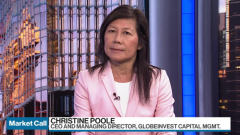Jun 14, 2024
Mexican Peso ‘Pandemonium’ Shows Signs of Abating as Positions Clear
, Bloomberg News

(Bloomberg) -- The sharp selloff that took the Mexican peso to a 15-month low is showing signs of abating after money managers staged the biggest stampede since the onset of the pandemic.
The peso is down just 0.4% for the week, just slightly more than a gauge of developing-nation currencies. Its one-month volatility, which hit the highest since the pandemic, has also retraced. It’s a relief after a 10% rout that turned one of the best currencies in the world into one of the worst within days after the surprise results of the June 2 elections.
The plunge was so severe that it moved Bloomberg’s dollar index, creating a divergence from the ICE gauge, as traders rushed to the exit. Asset managers cut their wagers on a peso appreciation by the most since March 2020 for the week ending June 11, closing out more than 36,500 contracts, data from the Commodity Futures Trading Commission showed on Friday.
Blindsided
President-elect Claudia Sheinbaum was widely expected to win and bring a more market-friendly bent to Mexico after the populist administration of President Andres Manuel Lopez Obrador. But the ruling coalition’s near supermajority in congress blindsided investors, who fear lawmakers will pass a swath of constitutional reforms that could erode checks on power and pressure the budget.
Comments from Sheinbaum and key lawmakers on changes to the judicial system, which include the election of supreme court judges, sent the peso plunging after the vote.
But such potential deterioration in governance is still uncertain and far off. Gorky Urquieta, a fund manager at Neuberger Berman Group LLC, said it was not clear the reform would create something worse than the current system. Plus, the new government appears committed to cutting the deficit and Mexico’s economy remains sound, bolstered by its ties to the US.
“There’s a bit of an exaggeration,” Urquieta said. “This isn’t going to be an environment where things are just going to unravel.”
The strong reaction is partially attributed to how many traders were betting on a stronger peso. CFTC data showed net-long contracts on the currency were near the highest since 2022 before the election, which investors had anticipated would be a non-event. Bank of America strategists called positioning “literally the highest ever.”
“It doesn’t appear to me that it has cleared out to a neutral trade,” said Arif Joshi, a fund manager at Lazard Asset Management. “So we have more volatility ahead of us.”
Asset managers are now the least bullish on the peso since October. Hedge funds, meanwhile, sharply increased bets in favor of the peso to the highest since late 2022.
Sheinbaum has said she will name her cabinet next week. If she surrounds herself with competent technocrats, the peso could find some support. But the impact will likely be marginal, Joshi said. The market needs to see concrete actions, which will likely be slow to come since Sheinbaum doesn’t take office until October, he said.
Others are more optimistic. JPMorgan Chase & Co. strategists said in a note this week — which they named “Peso Pandemonium” — that the currency overreacted and valuations are now “very attractive” for medium- and long-term investors. Sheinbaum’s administration, they said, is unlikely to derail the country’s strong fundamentals.
“Investors remain nervous given the events of the past week, and the policy agenda of the new government is revealed headline-by-headline,” strategists including Tania Escobedo Jacob wrote, reaffirming an overweight recommendation on the currency. “But we think a sensible evaluation of the situation points to looking through the noise at current levels.”
--With assistance from Carolina Wilson and Vinícius Andrade.
(Recasts with CTFC data.)
©2024 Bloomberg L.P.





